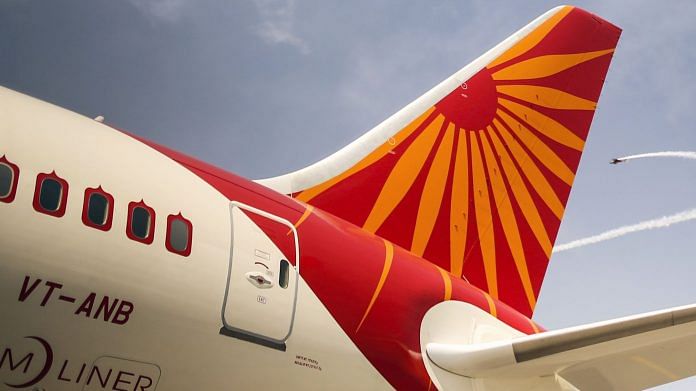The Covid-19 pandemic has been ominous for the aviation industry across the globe. As normality returns, travel has bounced back, becoming a ray of hope for all vested players. But the sun has shone the brightest on the Tatas as Air India returns to the group after 68 years.
The privatisation of the national carrier has been a long-drawn process, spanning over two decades. While many have argued that the Tatas got the national carrier back for peanuts, everyone has celebrated a homecoming long overdue.
Beating out SpiceJet promoter Ajay Singh, the salt-to-software conglomerate emerged as the successful bidder in the privatisation process, where the Narendra Modi government sold Air India for Rs 18,000 crore. Moreover, the Air India Assets Holding Ltd (AIAHL) will now take over 75 per cent of the Rs 61,562 crore debt, with the Tata Group handling just Rs 15,300 crore.
“The carrier was a symbol of all that can go wrong when a state lacking the ability to deliver basic services like health and education starts competing in the commercial arena,” columnist Andy Mukherjee wrote.
With poor service and a crumbling management in the face of politicians and bureaucrats exploiting it, Air India had earned a bad reputation. It ceased to be the first, or even second or third, option for many customers. But with its return to the Tatas, there are high hopes and a threat for IndiGo, SpiceJet and other players. And that’s why Air India is ThePrint’s Newsmaker of the Week.
Also read: Air India’s privatisation comes two decades late, but taxpayers should be relieved
Tatas become a major challenger
It remains to be seen what the Tatas will do with the four airlines they now have — Vistara, a full-service carrier with Singapore International Airlines, and an 84 per cent stake in low-cost carrier AirAsia besides Air India and Air India Express. Combining all four, the fleet size has now increased to 221, which include a range of aircraft — from Airbus 320s to Boeing 787-9 Dreamliners.
While this figure remains lower than IndiGo’s 247, it is now the only fleet falling in the same margin as the country’s largest airline. CEO Ronojoy Dutta has maintained that IndiGo is a “damn good airline”, acknowledging the shift in competition with the Tata takeover of Air India. “(A new) Air India — that is the real challenge for us,” he said. “They will be tough competition. I see them as a formidable force,” he added.
This disruption in the aviation industry is coming at a time when travel is returning in the backdrop of soaring fuel prices. While it will be a treacherous journey to rebuild Air India in this environment, other airlines now face stiff competition with the Tatas holding a combined market share of 26.7 per cent. Analysts believe SpiceJet is set to take a bigger hit than IndiGo.
However, international airlines too are threatened by this sale. With Air India’s 55 overseas destinations, lucrative international routes, a parent holding membership of the Star Alliance and more than 3,000 landing and parking slots, it has the potential to prove tough competition to airlines like Emirates, Qatar and Etihad, which have eaten into India’s international market.
In an interview to MoneyControl, Emirates president Tim Clark said if Air India is “able to develop a business model that is meaningful and brings value to the new shareholders and to India, the scope and scale of that airline is endless. And that is what they need to do. Will it affect us? Of course, it will.”
Dutta too pointed out a similar concern. “Internationally, they will be a strong competitor,” he said.
On the one hand, chatter in India about success has been about Mukesh Ambani and Reliance. He now enjoys the company of Elon Musk and Jeff Bezos in the $100 billion club. On the other hand, the Tata Group continues to make losses on Corus Steel in Europe and Jaguar Land Rover. Vistara paints a similar picture on the business end of things.
However, the conglomerate has remained the most trusted group (66 per cent votes), beating out the AV Birla Group (5 per cent) and Mukesh Ambani Group (4.7 per cent), as per a recent poll conducted by an independent equity research firm, Equitymaster.
With Air India back in its pocket, the Tata Group now has the opportunity to strengthen its other companies — much like it did with Vistara and AirAsia — by supplying products to the airline and “cross-selling products to Air India’s customers and the airline’s crew.”
Also read: Should Indian Railways be privatised to prevent it from going the Air India way?
Fast-tracking privatisation
The two-decade-long sale of the national carrier is a test case for India’s privatisation programme and it hasn’t been easy.
In 2001, it was a disinvestment offer where the Atal Bihari Vajpayee government would control more than half the equity, but there were no takers. The Modi government tried selling it first in 2018, where it offered 76 per cent of the equity but to no avail. Finally, in January 2020, the government put its entire share on the block. Even then, it has proven to be a monumental task.
“Modi’s goodbye to the indolent Maharajah — the airline’s mascot — will buttress his government’s reform credentials at a time when the economic recovery from Covid-19 is still tentative and uneven,” Mukherjee wrote.
The sale of a debt-laden Air India in the middle of a global pandemic will now boost confidence for privatisation of other PSUs. Tuhin Kanta Pandey, Secretary, Department of Investment and Public Asset Management, said: “Definitely, there will be a fillip because bidders will get more confidence in the government’s capacity to close transactions.”
Now that the Modi government has proven its willingness for economic reform, this could fast track privatisation of several other PSUs.
Views are personal.
(Edited by Prashant)



